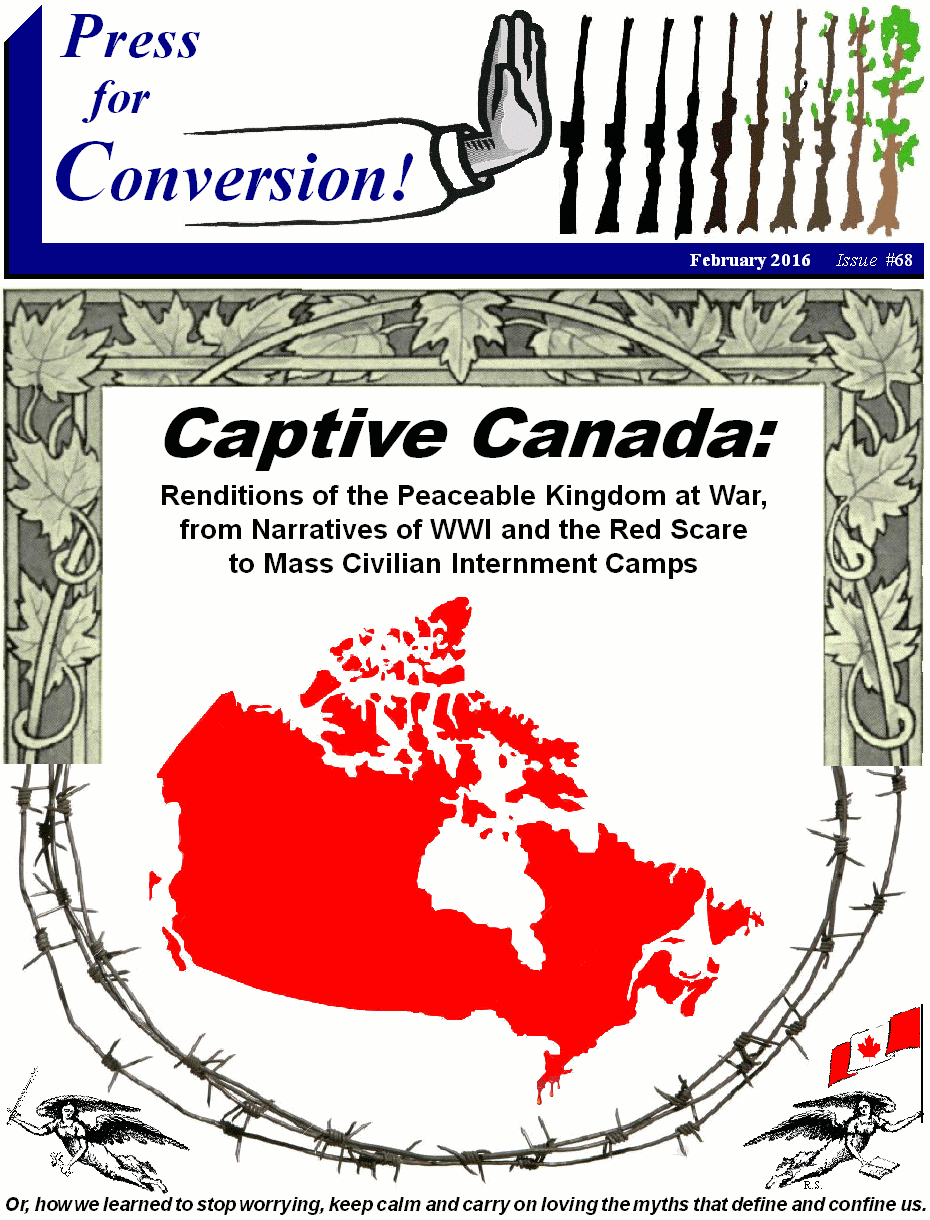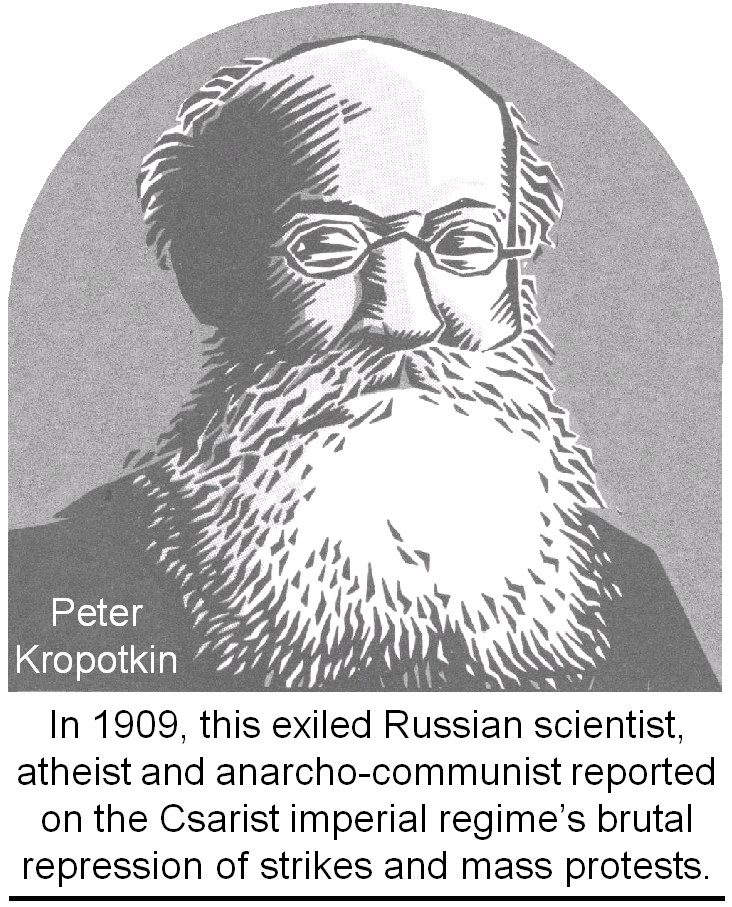 This
article was written for and first published in
This
article was written for and first published in
Captive Canada:
Renditions of the Peaceable Kingdom at War,
from Narratives of WWI and the Red Scare to the Mass Internment of Civilians
Issue #68 of
Press for Conversion (Spring 2016),
pp.38-39.
Press for Conversion! is the magazine of the
Coalition to Oppose the Arms Trade
(COAT).
Please subscribe, order a copy &/or donate with this
coupon,
or use the paypal link on our webpage.
If you quote from or
use this article, please cite the source above and encourage people to
subscribe. Thanks.
Here is the pdf version of this
article as it appears in Press for Conversion!
 The Russian Revolution of 1905-1907
The Russian Revolution of 1905-1907
By Richard Sanders, Coordinator,
Coalition to
Oppose the Arms Trade (COAT)
Revolution across the Russian
Empire was sparked in 1905, when Czarist troops shot and killed a thousand or
more peaceful protesters in St. Petersburg. In the Russian, Polish, Ukrainian, Finnish, Latvian and Estonian
protests that followed this “Bloody Sunday” massacre, millions joined general
strikes and mass rallies. To crush this struggle for justice, democracy and
labour rights, imperial troops killed thousands of socialists and anarchists,
and interned some 300,000.
In 1909, Britain’s Parliamentary Russian
Committee, which included an Anglican Bishop and two dozen MPs, published The
Terror in Russia, by Peter Kropotkin, a Russian geographer, economist,
atheist, evolutionary theorist and anarcho-communist.1 Using
reports by the Czarist regime, he showed that 2,350 civilians had been sentenced
to death and executed in Russia between 1905 and 1908. In addition, 1,330
civilians were shot without sentence and hundreds of soldiers were executed for
mutiny. Other state murders included those “shot in the streets”2 by
Csarist forces during huge protests and strikes.
Kropotkin also cited official data on 221,000 Czarist prisoners, and estimated
that 50,000 to 100,000 others were being held in local “police lock-ups.”
The crackdown also created more than 700,000 internal refugees in
European Russia. “[I]n consequence of repression after strikes,” said Kropotkin,
these people were forced to become “mere outlaws wandering from one city to
another...without any possibility of returning to their native places and to
their previous occupations.”3
As
historian Orest Martynowych noted: “the [Ukrainian Canadian] intelligentsia were
swelled by immigrants from eastern (Russian) Ukraine, who arrived after the
revolution of 1905.”4 These
“revolutionary intellectuals,” said historian Ross McCormack, soon took on
leadership roles in Canada’s “emerging eastern European socialist movement.”5
The
elites of Canada’s
church and state became more openly phobic. For example, in 1911, an official
Catholic paper “sowed panic... describing Montreal
as a hotbed of Russian anarchists who” as “veterans of the [1905] mutiny on the
battleship Potemkin,” were “the most dangerous elements of Russian Jewish
nihilism.”6
References/Notes
http://books.google.ca/books?id=qQLpVlQ61DMC
 This
article was written for and first published in
This
article was written for and first published in The Russian Revolution of 1905-1907
The Russian Revolution of 1905-1907